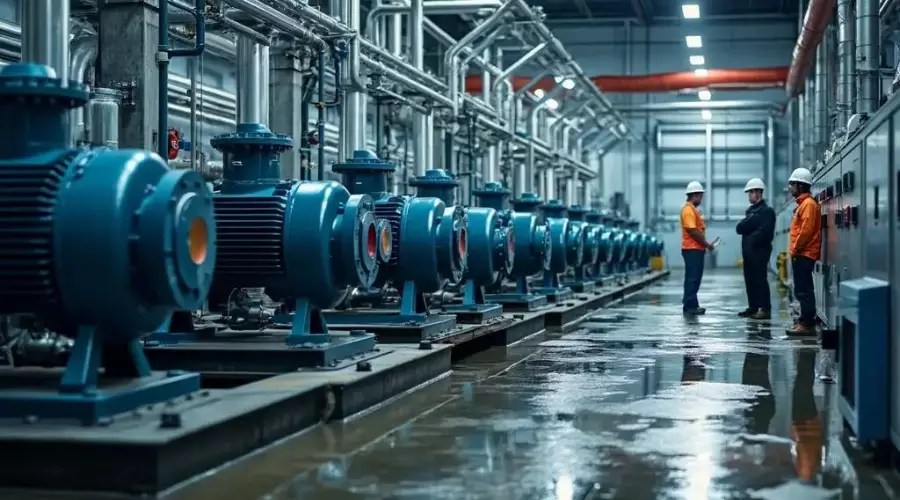Understanding Pump Capacity Requirements for Complex Projects

For large-scale commercial and industrial operations, the correct selection of pumping systems can mean the difference between project success and costly delays. When dealing with heavy-duty construction, mining, dredging, or municipal water handling, calculating pump capacity accurately becomes a central task. These systems are expected to perform under demanding conditions, often while managing significant volumes of abrasive or viscous materials.
Designing a solution without fully understanding the pump's capacity, defined by flow rate, head, pressure, and system friction, can compromise operational stability. Choosing the right pump isn't just about power; it's about making a system work efficiently, safely, and with minimal downtime.
What Defines Pump Capacity in a Commercial Context
Pump capacity refers to how much fluid the system can move within a set period, typically measured in gallons per minute (GPM) or liters per second (L/s). This value is influenced by several factors, including pipe diameter, head height, friction losses, and the characteristics of the fluid.
Industrial pumps are engineered to handle more than just water. Sludge, slurry, chemical mixtures, and fuel all have different viscosities and densities, which drastically affect how much energy is needed to maintain flow. Understanding this interplay is critical when choosing equipment that can withstand challenging environments without failure.
Pump capacity also depends on the type of pump, whether it's a centrifugal pump, diaphragm pump, submersible, or piston-driven unit. Each is suited for specific tasks, and their capacity ratings are only accurate when aligned with the intended application.
Evaluating Project-Specific Demands
Every project is unique. Pumping systems used in tunneling operations face different challenges than those designed for wastewater treatment. Therefore, project managers must take a tailored approach when determining requirements.
One key step is conducting a full site assessment. This includes evaluating vertical lift, horizontal distance, fluid characteristics, and any anticipated changes in flow volume. The presence of solids in the fluid, for instance, can clog or wear down standard pumps unless models built for abrasive environments are used.
Power source availability also matters. Whether the pump operates on diesel, electric, or hydraulic power can influence performance consistency, particularly in remote or off-grid locations. Fuel efficiency and noise limitations may further shape decision-making.
Factoring in Environmental and Regulatory Constraints
Environmental responsibility is now an expectation in modern industrial projects. Pump selection must align with sustainability goals, emissions regulations, and noise abatement standards.
For example, in urban construction zones, noise from diesel-powered units may be restricted. In ecologically sensitive areas, the risk of leaks from hydraulic systems could result in regulatory violations. These constraints shape what kind of equipment is permitted on-site and how it must be maintained.
Energy efficiency is another consideration. Newer models are designed to meet strict operational standards while minimizing carbon impact. This makes evaluating long-term operational costs just as important as upfront investment.
Flow Rate Adjustments During Operation
It's common for a project's pumping needs to change as progress is made. During excavation or mining, water inflow may increase, or material density might vary. Choosing systems with variable speed controls or modular pump setups gives managers flexibility to respond without needing a complete system overhaul.
Some modern pumps can be calibrated remotely, allowing supervisors to adjust performance without pausing operations. This adaptability reduces interruptions and ensures continuous productivity in dynamic environments. One vendor offering solutions in this space is https://www.daepumps.com/, among similar ones, whose range of commercial and industrial systems provides scalable options that align with shifting demands. These configurations help teams implement high-capacity pumping without overcomplicating logistics or setup.
Variable flow control isn't just about reaction; it's a strategy for optimizing fluid movement from start to finish, especially when site conditions are in flux.
Maintenance Planning Based on Capacity
Choosing a pump based on capacity is only part of the equation. You must also plan for how that capacity will wear down the system with time. Pumps handling abrasive slurry or corrosive chemicals require a proactive maintenance schedule.
Liners, seals, and impellers are particularly susceptible to wear. Monitoring flow rate discrepancies and pressure irregularities can indicate early signs of failure. Regular inspections are mandatory for any system operating near peak capacity on a daily basis.
Maintenance downtime must be factored into project timelines. Having spare parts on hand, or working with a supplier that offers rapid turnaround, reduces the risk of missed deadlines due to pump-related issues.
Advanced Monitoring and Predictive Diagnostics
Technology now plays a bigger role in capacity management. Sensors installed on pumps can track pressure changes, temperature fluctuations, vibration, and flow inconsistencies in real-time. This data is invaluable for avoiding system failures.
Predictive analytics software, powered by machine learning, can help teams forecast when components will fail based on performance trends. These systems flag unusual behavior long before physical inspections detect wear, improving safety and asset longevity.
Digital twins of pump systems are increasingly common in complex facilities. These virtual replicas simulate real-world performance and help engineers test scenarios without interrupting live operations.
Understanding pump capacity involves aligning power, flow, site demands, environmental expectations, and system flexibility. The best results come from selecting pumps that are designed to thrive in your specific project environment, not merely survive it.
With so many moving parts in industrial operations, it's clear that capacity planning must start early and remain fluid. A tailored approach backed by accurate data, proper sizing, and modern monitoring will ensure that your pump system supports your goals rather than slowing you down.



